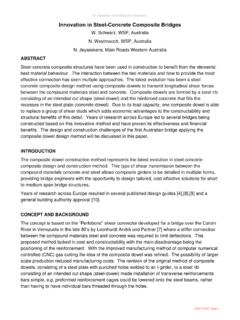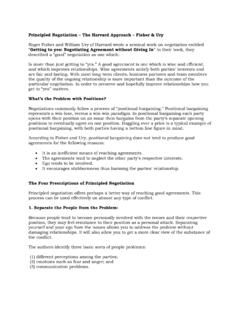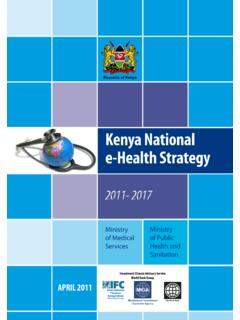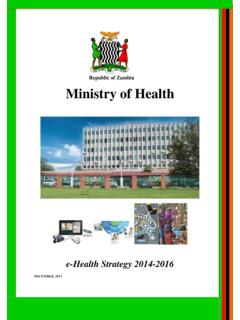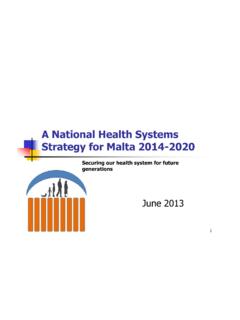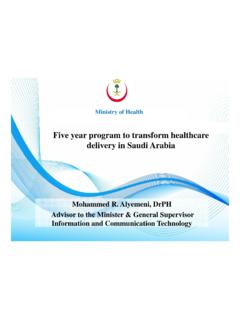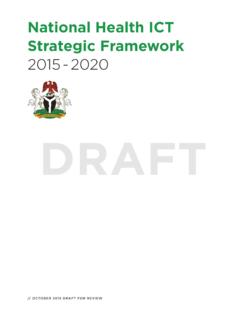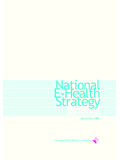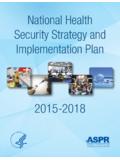Transcription of NATIONAL FINNISH EHEALTH AND ESOCIAL STRATEGY …
1 NATIONAL FINNISH EHEALTH AND ESOCIAL STRATEGY 2020 Ministry of Social Affairs and health , Finland health care in Finland Key principle Residence-based, universal and equal right to health services Provision Municipalities (320) are responsible for organising primary health care and specialised medical care 20 municipality owned hospital districts and appr 170 health care centres Employers organise preventive occupational health care Private health care appr 25% => Reform to be planned Funding Public services by tax revenues collected by the state and municipalities plus client charges Private services are partly reimbursed under the NATIONAL health insurance system Medication is partly reimbursed under the NATIONAL health insurance system => Financing reform to be planned Local and regional EHEALTH situation in Finland by 2015 Delights Strong base for further development EHR coverage 100% (public prim and sec healthcare) , 80% (private) EHR information exchange 90% (public, hospital districts) Electronical referrals and discharge letters 95% Wide use of NATIONAL solutions (ePrescription, eArchive, eAccess)
2 EU comission EHEALTH Benchmarking 2012-2013: Nordic countries are the leading countries in EU Drawbacks Forerunners dilemma: old EHR systems, usability Interoperability problems Slow adaptation of citizen eServices HIMMS and research2guidance study on EHEALTH adoption Information to support well-being and service renewal EHEALTH and ESOCIAL STRATEGY 2020 Focus area How to get it done Citizens Taking own responsibility - doing it yourself Professionals Smart systems for capable users Service system Effective utilisation of limited resources Information use Refinement of information and knowledge management Knowledge-based management Steering and co-operation From soloists to harmony Infostructure Ensuring a solid foundation Professionals - smart systems for capable users Strategic objectives Professionals have access to information systems that support their work and its operating processes Electronic applications in the use of professionals Measures NATIONAL criteria for the usability of information systems Decision-making
3 Support for professionals Training of professionals Active user involvement in the development and adoption of information systems and operating models Service system effective utilisation of limited resources Strategic objectives Social and health care information is accessible to professionals and citizens Information management solutions increase the effectiveness and impact of the service system The availability and accessibility of the services is being improved through electronic solutions Measures Renewal of legislation on the use of information related to social welfare and health care services Information management solution for social welfare implemented as part of Kanta services Further implementation of Kanta-services Development and use of online services Support for processes and operations Refinement of information and knowledge management knowledge-based management Strategic objectives Data sets support in real time the management of service production and decision-making in society in real time Data sets support research, innovation and industrial and commercial activities Measures Legislation on secondary uses (unrelated to care or client relationship)
4 Of social welfare and health care data Development and resourcing of secondary use of data Population-level statistical and indicator services Common infrastructure for secondary use Steering and cooperation - from soloists to harmony Strategic objectives The structures for steering and cooperation in the area of information management are clear and support the social welfare and health care service reform Measures Renewal of steering and leadership of information management in social welfare and health care services A model for cooperation between social welfare and health care regions and NATIONAL operators Citizens as service users - doing it yourself Strategic objectives by 2020 Citizens use online services and produce data for their own use and for the professionals. Reliable information on well-being and services supporting its utilisation are available Information on the quality and availability of services is available in all parts of Finland use of web: 27% 75-89 y 92% 16-74 Citizens as service users - doing it yourself Measures NATIONAL platform for managing the citizens personal information in the areas of health and well-being The implementation will utilise NATIONAL services and open interfaces.
5 Citizens themselves will make the decisions regarding the storing of their information on the platform and its disclosure using the applications to be built on the platform. use of web: 27% 75-89 y 92% 16-74 Renewal of services must be supported by ICT-solutions! THANK YOU P ivi Sillanaukee Permanent Secretary Ministry of Social Affairs and health



